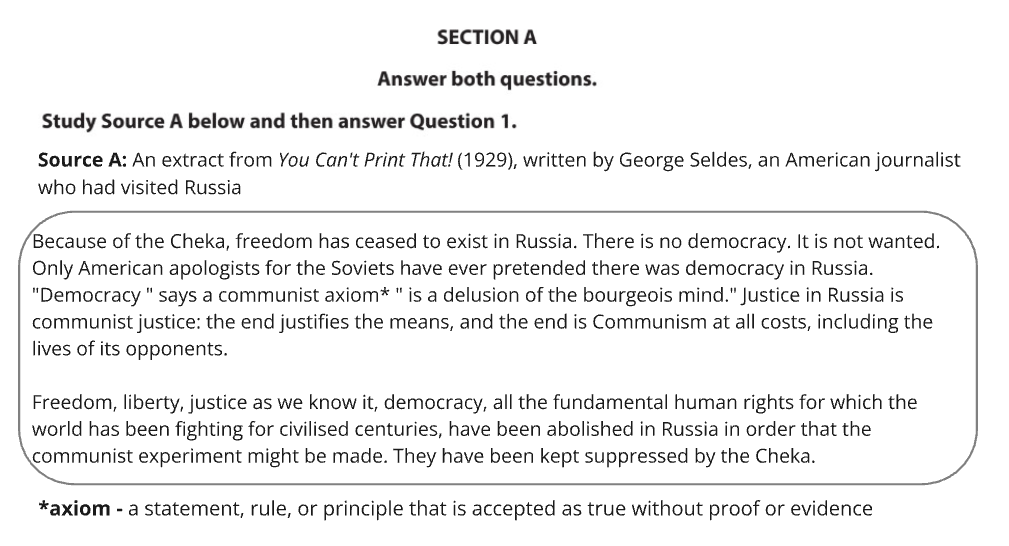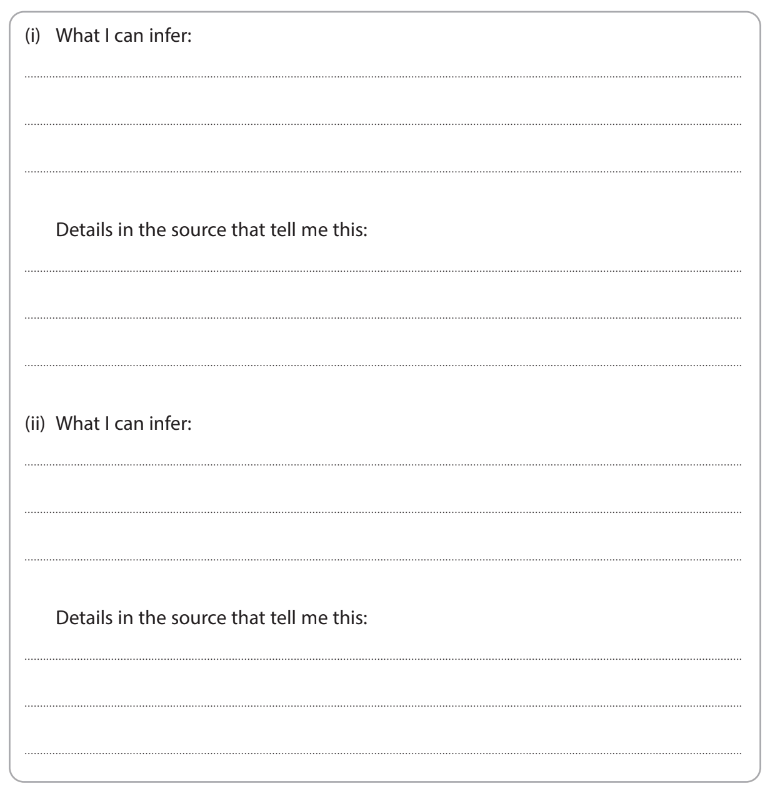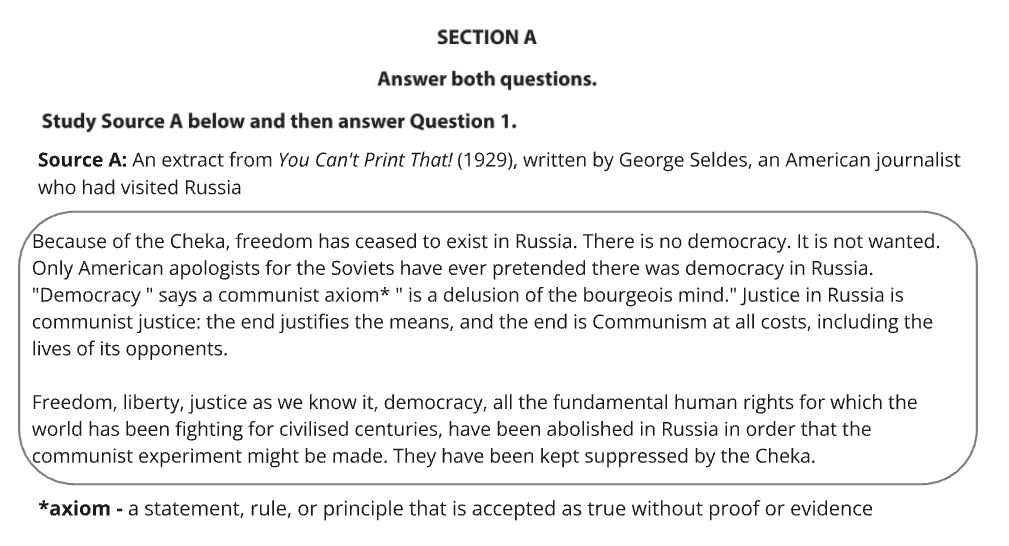The 4 Mark "Give Two Things You Can Infer" Question (Edexcel GCSE History): Revision Note
Exam code: 1HI0
Summary of Question 1
Question 1 requires you to make two inferences about Source A
Each inference must be directly supported by a detail or quote from the source
The answer section is broken down into four guided questions
Amount of marks | 4 |
|---|---|
The time that you should spend on the question | No more than 5 minutes |
An example of the type of question you may encounter can be seen below:

In previous years, this question has focused on the following topics in Russia and the Soviet Union:
Year of Exam | Question Topic |
|---|---|
2018 | Collectivisation (opens in a new tab) |
2019 | The Bolshevik government's attitude towards education (opens in a new tab) |
2020 | Bolshevik supporters during the seizure of power (October 1917) (opens in a new tab) |
2021 | Stalin as a leader (opens in a new tab) |
2022 | The impact of Bolshevik policies on women (opens in a new tab) |
2023 | The aims of the Kornilov Revolt (opens in a new tab) |
2024 | War Communism |
What is an inference?
An inference is an educated guess based on evidence
To remember how to infer, follow these steps:
I notice — What does the source show or say?
I already know — What own knowledge do you have?
Now I am thinking … — Combine the above to make your inference
For the Russia and the Soviet Union exam, you will need to:
Study Source A
Utilise your own knowledge to make sense of the source
Make a statement about Source A, connecting what you can see and what you know
Using the content of a source
The content is the information presented in the source
The content could come from a variety of different types of sources, such as:
A picture
A photograph
An extract from a book
A speech
A political cartoon
A letter
You should use details from the content (a quote or description) to support each inference
In the example question, you should look at Source A for information about the role of the Cheka
How to answer a "Give two things you can infer" question
Question 1 will always be based on Source A
You will find Source A on the first page of the answer booklet
Do not use the sources in the insert booklet
Sources B and C are clearly marked for Section B of the paper

To begin, read the question carefully
Underline the topic mentioned in the question
Read the source, in full, several times
If Source A is a visual source, take your time to study the source
Annotate the source by applying knowledge to the source that is relevant to the question
"Give two things you can infer" question structure
The "Give two things you can infer" answer space is laid out clearly into four guided sections

Section | What to Write |
|---|---|
"What I can infer" | Your first inference (1) |
"Details in the source that tell me this" | A quote (for a written source) or a description (for a visual source) (1) |
"What I can infer" | Your second inference, different from your first inference (1) |
"Details in the source that tell me this" | A different quote or a description (1) |
You will be limited to 2 marks if you:
Only write inferences
Only select details from the source
Write more than two inferences
Do not back your inferences with details from Source A
Worked example of a "Give two things you can infer" question
Worked Example
Give two things you can infer from Source A about the role of the Cheka in Russia.
Complete the table below to explain your answer.

(4)
Answer:
What I can infer: The Cheka was used to stop anyone who disagreed with the government. (1)
Details in the source that tell me this: "all the fundamental human rights … have been abolished in Russia." (1)
What I can infer: The Cheka made people live in fear so that the Communist leaders could stay in control. (1)
Details in the source that tell me this: "the end is Communism at all costs, including the lives of its opponents." (1)

Unlock more, it's free!
Did this page help you?